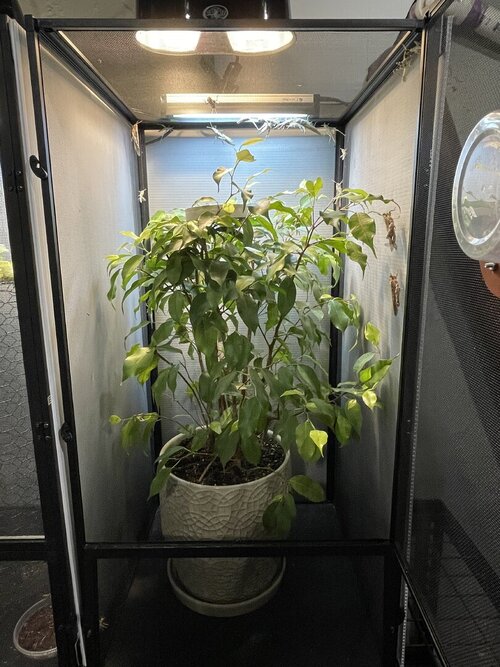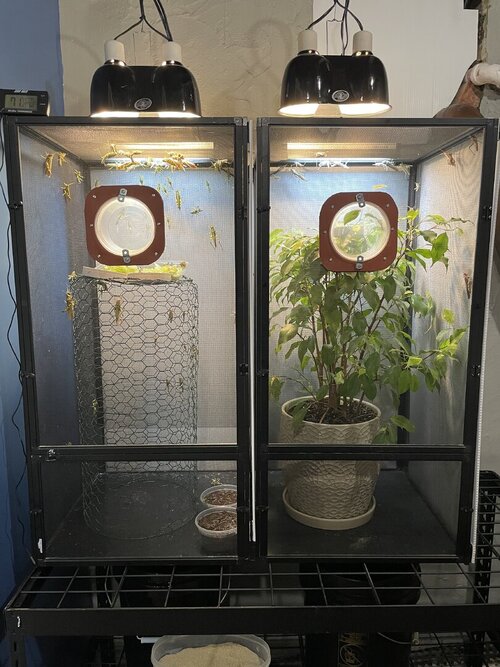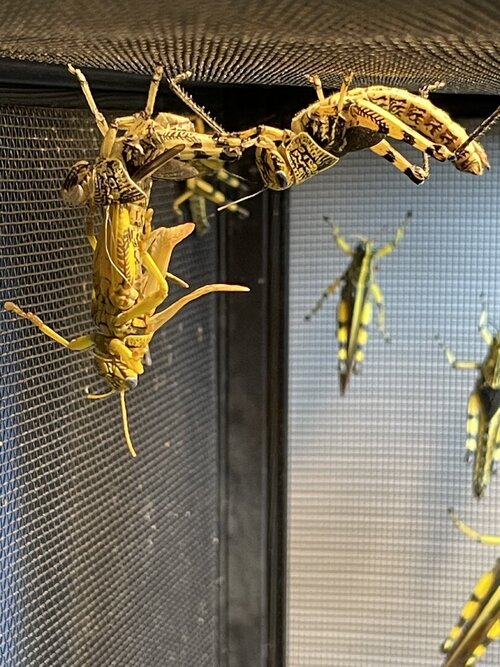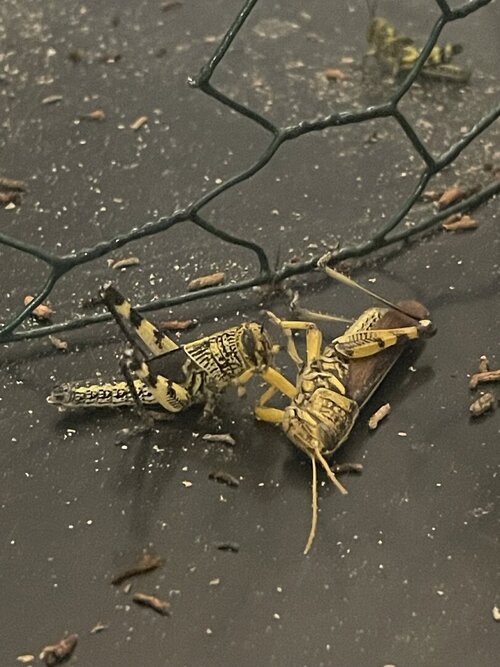ChamelaChameleon
Chameleon Enthusiast
The Spotted Birds lay bin has eggs but for some reason I found 2 holes with no eggs or egg sack. Should I give the Spotted Birds a new bin?Yes, and it is slightly moist.
I'm trying to join the million hopper club.Im chalking this all up to natural selection. If there’s 100 million hoppers each year and by the grace of God, 1 out of 100 survive to adulthood through several molts, predators, pesticides, and illness AND they go on to mate, and successfully lay eggs, they lay 100 eggs each and guess what? There’s 100 million hoppers next year.











